
“Barra Dave” Donald
Retired Barra Guide And Cape York Fishing Icon
There would be few anglers more qualified to talk about barramundi fishing the Weipa area than Dave. Aside from decades of distinguished service as a barramundi guide, Barra Dave has been writing about fishing the Cape York area since 1971 and is one of a handful of recognised pioneers of Far North Queensland fishing. Dave has lived, worked and fished the Cape for decades, calling Weipa home for much of that time.
Barra Dave’s Top 5 Cape York Barramundi Destinations
- Be aware that many of these fishing destinations are remote and that there will be very limited availability of gear and supplies, so be self-sufficient, carry all that you need plus spare parts, recovery equipment and so on.
- Boating on Cape York can be a compromise between access and safety. Large boats are generally not suited to the area because they’re not great for towing on rough roads. However, due to the crocodile hazards the smallest boats suited to fishing the area would be around 4-5m.
- If you find a nuisance crocodile that steals your fish or acts aggressively it is best to move on rather than risk coming out second best in a clash.
- Many of the fishing sites are on lands owned by Traditional Owners and respect for their culture is important if anglers don’t want to be permanently excluded from these sites. On many traditional lands alcohol is also not permitted and steep fines and penalties apply if it is brought to camp.
- As a general rule for barramundi fishing, if there’s no run there’s no fun. Dave finds the last half of the runout tide and the first half of the run in tide are best for barra fishing. However, in the wet season there can be an additional opportunity caused by tides pushing up the creeks and backing up the freshwater, then at the very start of the runout tide the fresh starts coming out fast and carries mullet and other bait with them.
- If you’re fishing for barramundi in more than a metre or two of water you’re probably fishing too deep!
- The closed season for barramundi starts earlier on the western side of the Cape than it does on the eastern side, so be sure to know your regulations when you’re fishing the area. The Gulf barra season usually closes in early October, whilst the east coast season closes on 1 November, both areas re-open on 31 January each year, at midnight.
Barra Dave’s Top 5 Cape York Barramundi Destinations
Lakefield National Park And Princess Charlotte Bay
- There are masses of rivers, waterholes and beaches in the Lakefield District and pretty much all hold barra if you’re there at the right time.
- The fishing is often best in the leadup to the wet season and during the runoff, however access to the park is closed during the wet season, typically from 1 December until May or June, depending on the part of the park and the weather conditions. Be sure and check closure dates before planning a trip.
- Access to some waterways is still possible through private property when the park is closed, but may require quad bikes and permission is becoming increasingly harder to get.
- Land based fishing is possible in many areas, but care must be taken to avoid the dangers of crocodiles.
- Lakefield has what Dave refers to as “classic barra habitat” with tons of lagoons, salt marshes and swamps that act as nursery areas and dry season refugia.
Kowanyama And Mitchell River
- This area is even more challenging to access than Lakefield. Bookings are limited by number and can be made through the Kowanyama Council or Kowcamp but usually sell out within two weeks of opening up in February or March each year.
- Dave is not aware of any guides operating on these systems and the area is remote, so you need to be self-sufficient and self-guided.
- The area is famous for black soils, which turn from concrete to slurry with the slightest amount of rainfall, so dry season is definitely the best option.
Karumba
- Karumba has a reputation for being a big barra fishery, however it does get worked by commercial netters and increasingly it is becoming necessary to travel further to find big fish.
- Access to Karumba is pretty good these days, with sealed roads a lot of the way, the downside being that it’s become a destination for grey nomads and you need to book well in advance to secure accommodation.
- The best times to hit Karumba are shortly after the season opens at the start of February through to around May or June, or during the build up to the wet season as the waters are warming. The months of July and August are the most challenging for barra fishing right throughout the Cape as the cooler water temperatures slow the fish down. By mid-September the water warms and the fish start to chew again.
- Kurumba is often regarded to be more of a trolling river as it can be necessary to cover a lot of water in search of the fish. However, fish can be caught by casting also.
Jackey Jackey Creek
- The Jackey Jackey system is immense, with 72 individual watercourses and could be fished every day for a month without ever fishing the same place twice.
- The area can be accessed by four-wheel drive during the dry season or by flying in and hooking up with a guide. Alternatively, some punters like to put their four-wheel drive and boat on a barge in Cairns and fly up to Bamaga to pick them up, then drive back down. The last option is quite expensive but worthwhile if you’re spending a reasonable amount of time in the area. Hire boats are available at Bamaga also.
- The main river systems Dave suggests anglers who are new to the area start with are Jackey Jackey Creek, Middle River and the Escape River. The new ramp behind the airstrip at Bamaga is a great place for anglers to start exploring.
- This is a tidal system, so unlike the Weipa area, there are two tides per day, which tends to increase the diversity of fish available.
- This can be a very windy place to fish, but there’s always a lee shore to fish, just watch out for sand and mud banks if you don’t want to get stuck and have to wait for the tide.
- Barra can be found right throughout the systems here, but focus on the drains during the last of the runout and first of the run-in tide and the snags at other times. Don’t discount any snag, sometimes a small stick poking out of the water can hold multiple fish.
Wenlock River And Port Musgrave Area
- The Wenlock system is one of the more accessible on the Cape, with increasing portions of the road to Mapoon being bitumised. There are two boat ramps, one at Cullen Point at the mouth of the Wenlock River and a mud ramp at Clough’s Landing.
- There are cabins and facilities in Mapoon and a small shop for basic supplies. The cabins and also the camp ground at Cullen Point are very popular and it’s necessary to book well ahead. Oppressive mosquitoes at Clough’s landing would make camping extremely uncomfortable.
- The Wenlock is an extensive system that extends a long way eastwards and in its upper reaches holds sooty grunter and saratoga. Being a meandering system with plenty of billabongs, wetlands and waterholes it has good nursery areas that support the barra population.
- The Ducie River, Dulhunty River and Skardon River are also excellent barra waters, as it Namaleta Creek, opposite Cullen Point on Port Musgrave. Namaleta would be Daves suggestion for newbies to the area as a starting point for an expedition.
- The area boasts huge mudflats, particularly on the northern side of Port Musgrave around the mouth of the Ducie. These contain plenty of drains and are an excellent place to fish on the last of the run out tide and the start of the run in tide.
- Further up the Ducie system before the Dulhunty confluence there are some small creeks flowing in that are always worth a look.
- This is a system where there is only one major tide per day. During the summer the major low tides occur during the night, which can make the fishing challenging. During winter this reverses and the major low tide is during the day.
Barra Dave’s Cape York Barra Fishing Tackle
- It’s worth carrying a couple of baitcast rods for casting heavier lures and a spin rod for casting lighter soft plastic barramundi lures.
- For baitcast reels, look for something solid that can hold 180-200m of 30lb braid and a slightly longer rod from 5’10” to 6’3” in length with a reasonable amount of sensitivity in the tip.
- For spin gear, a 4000 size reel loaded with 20-30lb braid is ideal. Look for a longer rod of around 7’, again with some sensitivity in the tip to provide cushioning and reduce pulled hooks.
- In many of the areas discussed herein you are likely to come across large barramundi and if you use a light leader you’re likely to lose fish to being rubbed off on their raspy teeth. Dave recommends not going below 50-60lb fluorocarbon for leaders and has recently being using Schneider line.
Don’t Forget To Check Our Ultimate Guide To Barramundi Lures!
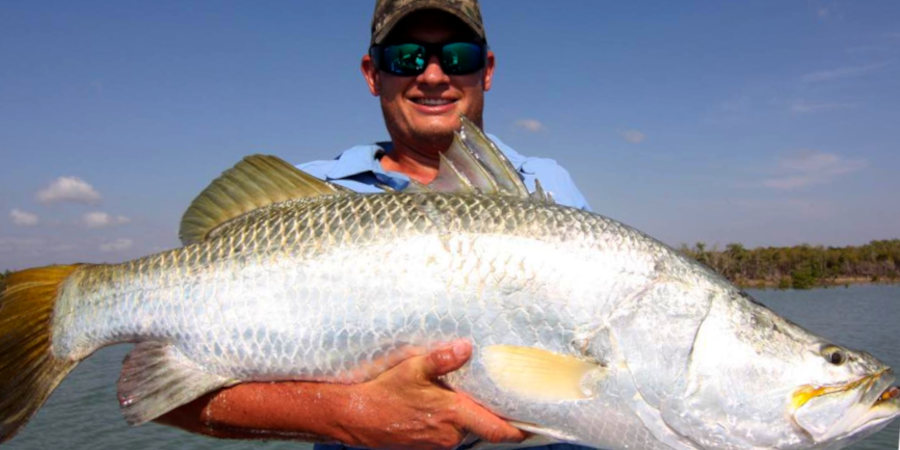
Victoria and Roper Rivers Barramundi With Trent De With
ALF EPISODE 681 Fishing for barramundi in the Victoria and Roper rivers is an experience every angler should aspire to. With unique challenges and rewarding catches, these rivers in the Northern Territory are prime spots for landing this iconic species....
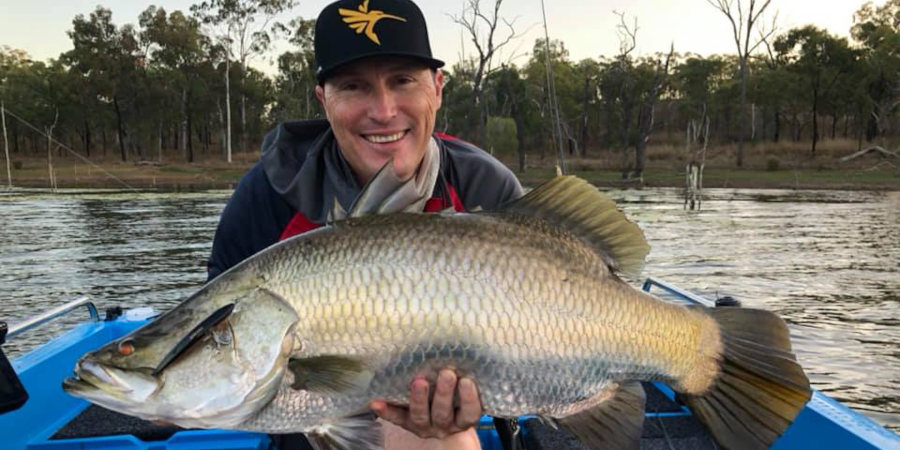
Barramundi Fishing In Lakes Awoonga And Monduran: A Comprehensive Guide
Get all the advice you need for fishing Lake Awoonga and Lake Monduran. Gun angler and former guide Roderick Walmsley shares his tips here.

Central Queensland Barra Lakes With Roderick Walmsley
Rod's interview on barra lakes was ALF EPISODE 648. Check out our lure fishing archives for more information on Barramundi Fishing, or grab our guide to Barramundi Lures. Roderick Walmsley Fishing Writer and Personality Roderick has made a life out of fishing. A...

Barramundi Paradise: Lakefield National Park Fishing
Lakefield National Park is a remote barramundi wonderland, but Luke Galea reckons it’ worth “doing the miles to get the smiles” even when you’re off the beaten track already. Tune in as he explains how to plan and execute a land-based Lakefield National Park fishing odyssey.

Unravelling Trophy Wet Tropics Barramundi In The Spring
ALF EPISODE 637: This Interview With Brodie Quaas Is His Second On Wet Tropics Barramundi. You Can Check Out His Previous Episode Here. Or, Get Our Barramundi Lures Guide Brodie Quaas Far North Queensland Fishing Guide Brodie is a former NSW tournament angler who...
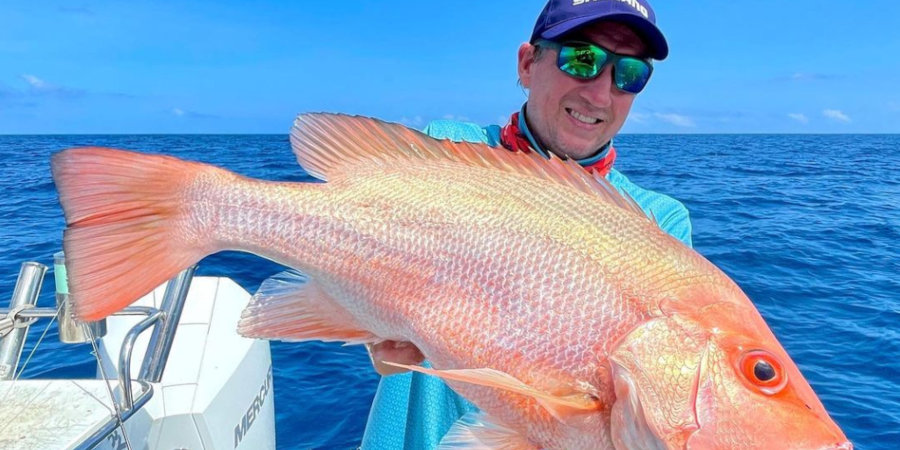
Five Groote Eylandt Fishing Adventures With Bomber Farrell
Bomber Farrell returns to the ALF podcast, this time to explain his top five Groote Eylandt fishing experiences!
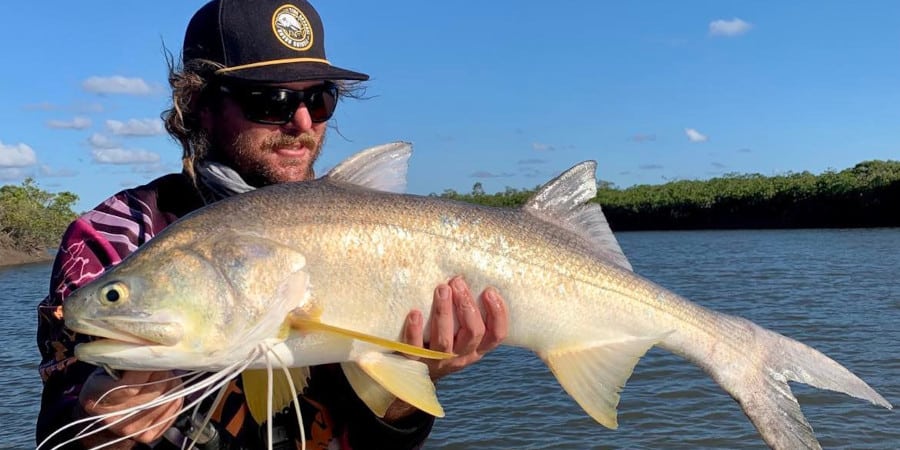
Episode 593: Great Sandy Straits Autumn Fishing With Ryan Holdsworth
The Great Sandy Strait has almost unlimited barramundi, mangrove jack and threadfin habitat….. you just need to know how to fish it. Fortunately, today’s guest Ryan Holdsworth gives his tips freely and will put you on the right course to success!
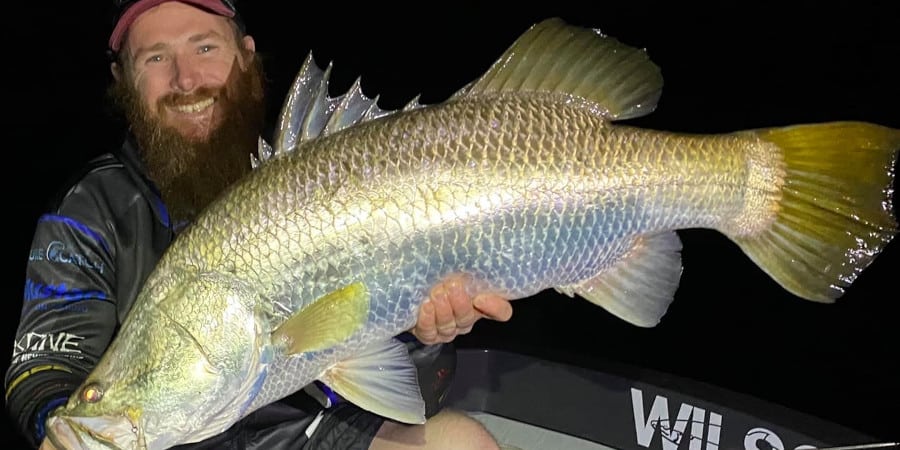
Mackay Headlands Barramundi: What You MUST Know Before You Get Smoked!
Jono Clark is probably best known as an gun impoundment barra angler, but he also chases barra (and a ton of other species) in shallow water on headlands. Today he gives us the good oil on how to go about putting some solid fish on the deck.
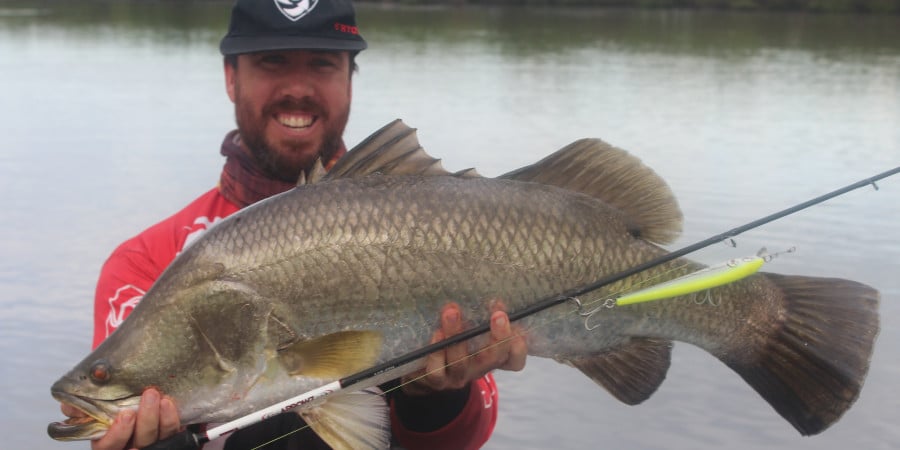
Episode 581: Chambers Bay Runoff Barramundi With Tristan Sloan
The barra fishing in NT during the runoff period is legendary and today’s guest has had plenty of opportunity to experience it. Tristan Sloan shares his tips and advice for one of his favourite runoff barra haunts – Chambers Bay!
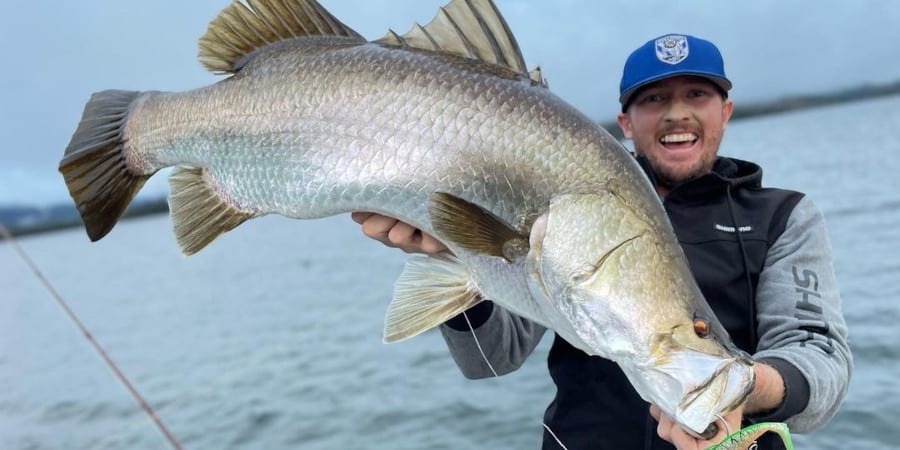
Episode 577: Lake Tinaroo Barramundi With Brodie Quaas
Lake Tinaroo is famous for producing some if the largest impoundment barra you’ll find anywhere, and our guest in Episode 577 is fast developing a reputation for putting his clients onto some massive specimens!
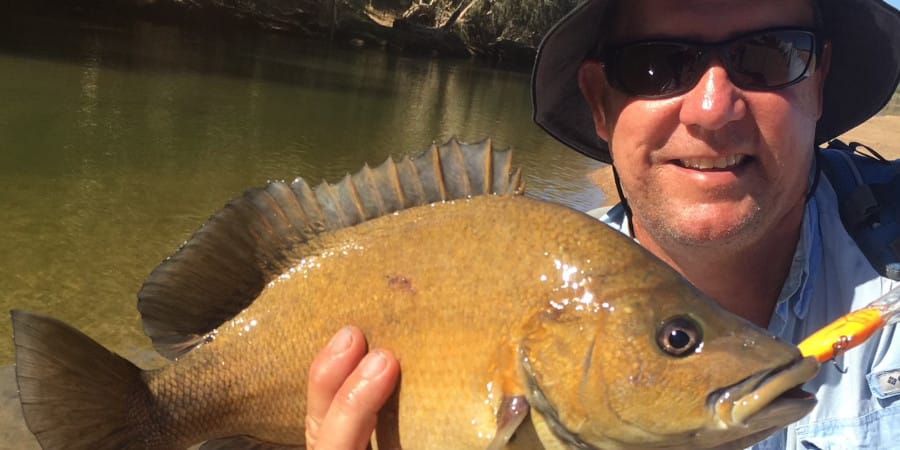
Episode 522: Far North Qld Sooty Grunter With Phil Laycock
Pound for pound, sooty grunter are as tough a freshwater sportfish as you’ll find anywhere. Aggressive lure takers and hard fighters in often skinny water, sooties are accessible to just about anyone fishing Far North Queensland, whethere from boat, kayak or bank.

Episode 511: Five Best Winter Fishing Spots In The Wet Tropics With Kim Anderson
The wet tropics rivers and estuaries are often thought of as wet season options, but long time local guide Kim Anderson dispells that myth!
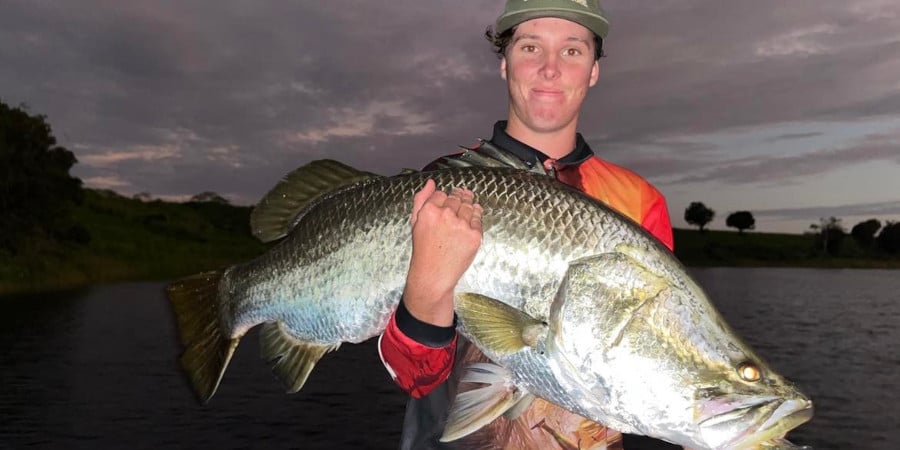
Episode 505: Koombooloomba Dam Sooties And Barra With Riley Ward
Koombooloomba Dam isn’t even on the radar for most northern impoundment fishos….. But it should be! Riley Ward explains how to catch football sized sooty grunter and metery barramundi from this stunning dam system.
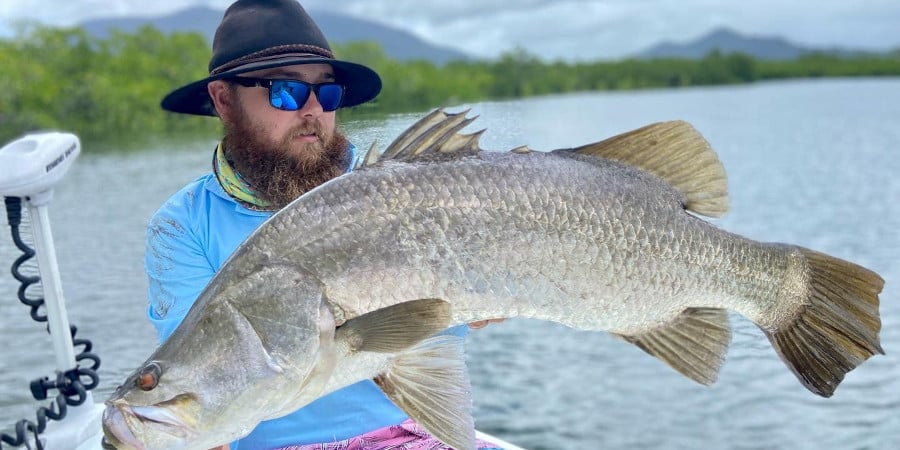
Hotspots: Five Best Winter Fishing Spots Around Hinchinbrook
This conversation with Jimmy Falkenberg was ALF EPISODE 591, but it's only one of hundreds of lure fishing episodes in our library. Fishing The Hinchinbrook Area In Winter The tropical north of Australia doesn't have the four distinct seasons of the southern states....

Victoria and Roper Rivers Barramundi With Trent De With
ALF EPISODE 681 Fishing for barramundi in the Victoria and Roper rivers is an experience every angler should aspire to. With unique challenges and rewarding catches, these rivers in the Northern Territory are prime spots for landing this iconic species....

Barramundi Fishing In Lakes Awoonga And Monduran: A Comprehensive Guide
Get all the advice you need for fishing Lake Awoonga and Lake Monduran. Gun angler and former guide Roderick Walmsley shares his tips here.


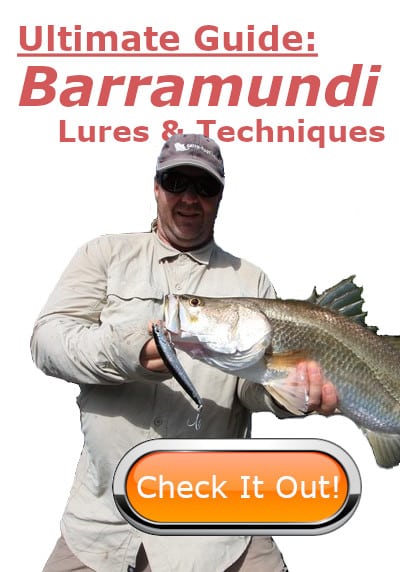
GREAT session, thank you. Really appreciate the tips, such as fishing last half of run out, first half of run in, fishing shallow water, how to fish bombers, lots of others.
This is one of my favourite episodes, i am heading up this way soon, dreaming of the remote fishing.
such a wealth of information in this one.